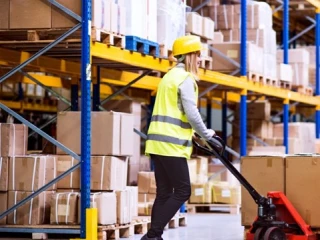A rapid uptake in the manufacturing industry
The manufacturing industry is starting to see rapid uptake of VR, particularly within factory and warehouse settings, where utilization is being driven by the wide range of applications that it supports. In addition, third party logistics, consumer-packaged goods and the pharmaceutical industry could benefit, such as in the case of drug development phases to visualize the interactions between molecules.
Undoubtedly, businesses will need to identify use cases where the technology can benefit them in relation to costs in order for the investment to be viable, as a potential barrier to implementation could prove to be resource costs up-front, such as training and development resourcing in the use of software development and building new 3D solutions representing the environment to the model. Therefore, organizations need to factor this into their financial planning. For those that discover a commercial case, the potential applications are almost endless.
VR can also play a key role in training staff. Control technicians, engineers and skilled operators working in manufacturing environments are now increasingly trained using this technology. Trainees are able to gain valuable experience on key tasks in a virtual warehouse environment, without the risk of working in a physical environment while they are learning the ropes. Long-term, this ability to provide virtual tuition will enable enhanced productivity in the real world, as well as limiting health and safety issues.
/Vision-of-the-manufacturing-future-720x360-(1).webp?mode=autocrop&w=320&h=320&attachmenthistoryguid=b23e2cf0-2c8f-4f34-a6a6-8372475d7011&v=&focusX=435&focusY=209&c=d30d869396f8ddb1b495acf1febe41110338dbeeddd8e2735e1ac4dee2ee6e84)

/How-to-manage-Supply-Chain-Disruption-crop-720x360-(1).webp?mode=autocrop&w=320&h=240&attachmenthistoryguid=89faae74-4ddf-42a8-945a-8541b9aa6596&v=&c=b43e609197f7f8b8e4a3a8cdf324f4b65fb12cb31954500d1f8dd4cd08fb7880)
/Predictive_Planning_720x360-(1).webp?mode=autocrop&w=320&h=240&attachmenthistoryguid=3d4fa1bc-b584-4423-b59a-e3f3d9507238&v=&focusX=522&focusY=101&c=e069d433b5f10fb7b3a5fc2ac5f19b7c3475584468cdccf2b6eb02ab637967f0)